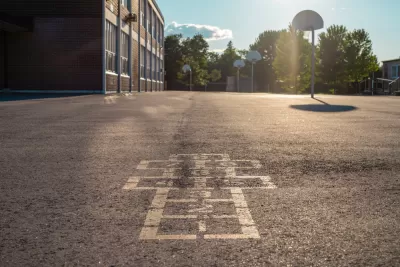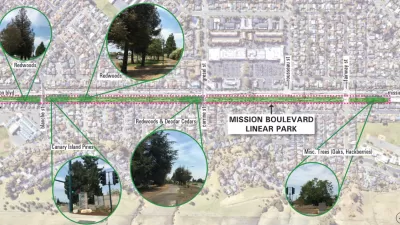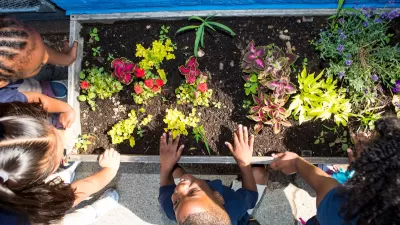New research suggests that switching from asphalt to green, park-like schoolyards brings economic benefits in addition to public health improvements.

“A new study from Trust for Public Land effectively dispels a common misconception among school administrators about the price tag of transforming asphalt-covered and treeless schoolyards into green schoolyards,” according to a press release from TPL. “The study compared the typical cost of building and maintaining a traditional ‘gray’ or asphalt-covered schoolyard in California to a ‘green’ schoolyard (replacing asphalt with more natural green space and infrastructure) over a 20-year period. While gray schoolyards had a moderately lower initial renovation cost ($2.3 million compared to $2.6 million for green schoolyards), they yielded no benefits over time, with schools continuing to sink money into resealing asphalt.” By contrast, green schoolyards bring close to $600,000 in net benefits. These include higher student attendance and staff retention, better academic performance, and savings on energy costs.
“The findings make a strong case for schools to stop wasting resources in maintaining asphalt and blacktop – surfaces that create uncomfortable and dangerously hot environments during recess on triple-digit temperature days in Los Angeles – and instead invest them in green schoolyards, which create safer, healthier learning environments for students.”
Green schoolyards can also double as community parks outside of school hours, providing critical green space in park-poor neighborhoods. “Trust for Public Land’s pilot program with the Oakland Unified School District is improving park equity in the area by bringing green schoolyards to five campuses.” In Southern California, Los Angeles Unified School District’s superintendent Alberto Carvalho has pledged to issue a plan for greening the city’s schoolyards.
FULL STORY: Cost-Benefit Analysis: Green Schoolyards Brings Major Benefits, Cost Savings

Planetizen Federal Action Tracker
A weekly monitor of how Trump’s orders and actions are impacting planners and planning in America.

Restaurant Patios Were a Pandemic Win — Why Were They so Hard to Keep?
Social distancing requirements and changes in travel patterns prompted cities to pilot new uses for street and sidewalk space. Then it got complicated.

Maui's Vacation Rental Debate Turns Ugly
Verbal attacks, misinformation campaigns and fistfights plague a high-stakes debate to convert thousands of vacation rentals into long-term housing.

In California Battle of Housing vs. Environment, Housing Just Won
A new state law significantly limits the power of CEQA, an environmental review law that served as a powerful tool for blocking new development.

Boulder Eliminates Parking Minimums Citywide
Officials estimate the cost of building a single underground parking space at up to $100,000.

Orange County, Florida Adopts Largest US “Sprawl Repair” Code
The ‘Orange Code’ seeks to rectify decades of sprawl-inducing, car-oriented development.
Urban Design for Planners 1: Software Tools
This six-course series explores essential urban design concepts using open source software and equips planners with the tools they need to participate fully in the urban design process.
Planning for Universal Design
Learn the tools for implementing Universal Design in planning regulations.
Heyer Gruel & Associates PA
JM Goldson LLC
Custer County Colorado
City of Camden Redevelopment Agency
City of Astoria
Transportation Research & Education Center (TREC) at Portland State University
Camden Redevelopment Agency
City of Claremont
Municipality of Princeton (NJ)





























